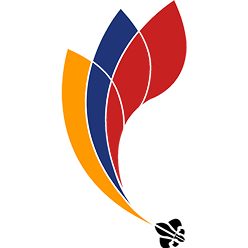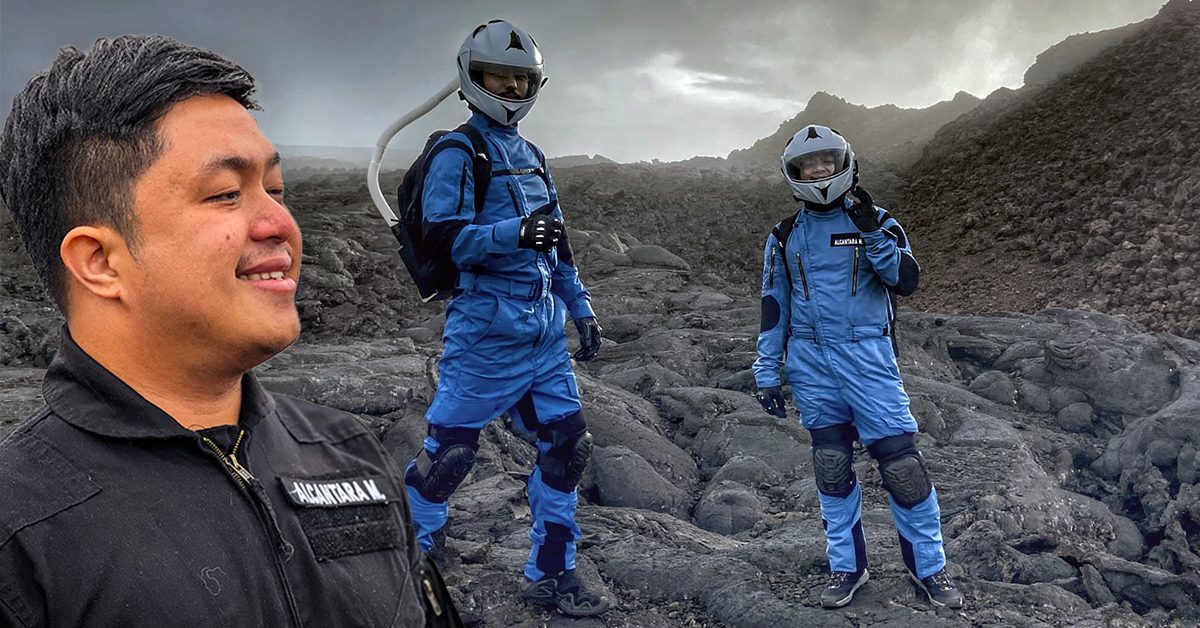MARIKINA, Metro Manila—The second Filipino analog astronaut, returned home from a space simulation expedition at the Hawaii Space Exploration Analog and Simulation (HI-SEAS) habitat at Mt. Mauna Loa, Hawaii on March 18.
Dr. Marvic Jon Alcantara, 31, is a part-time instructor at Rizal Technological University – College of Arts and Sciences’ Department of Earth and Space Sciences and a Medical Officer III at Batanes General Hospital.
In his post, he shared that “Our journey to the moon has ended. We were exposed to a simulated lunar environment with various challenges.”
“There was a time when everything went south, and despite our differences in backgrounds, race, and field of specialization, the crew worked as one and was able to carry out interventions that got us through,” he continued.
According to the National Aeronautics and Space Administration NASA, analog missions are “field tests” to ensure that the technologies and the experiments that will be carried out in actual space missions are feasible and will work.
The tests include “new technologies, robotic equipment, vehicles, habitats, communications, power generation, mobility, infrastructure, and storage. Behavioral effects – such as isolation and confinement, team dynamics, menu fatigue, and others are also observed.”
From the same website, analog missions are important in “problem solving for spaceflight research” for 3 reasons;
- Not all experiments can be done in space – there is not enough time, money, equipment, and manpower.
- Countermeasures can be tested in analogs before trying them in space. Those that do not work in analogs will not be flown in space.
- Ground-based analog studies are completed more quickly and less expensively.
Analog astronauts are the individuals who are playing the role of astronauts, simulating crewed deep space missions here on Earth, such as being geographically like the areas of real missions in the future, may it be in the Moon or Mars.
Dr. Alcantara is the “second Filipino analog astronaut” and the “first medical doctor analog astronaut. “
He is ECHO, the Medical Officer and Nutrition Specialist of Mission I Na Hoku (To the Stars) of EuroMoonMars + International MoonBase Alliance (IMA) + HI-SEAS (EMMIHS) Class of 2024.
In the same post, “As the Medical Officer and Nutrition Specialist, I was able to learn how to manage some medical cases caused by a different environment while at the same time experiencing the same, he added.
He said that his goal was to provide “holistic care, proper nutrition and optimal health for the crew despite a situation far from our standard of living,”
The crew’s conquest of a week-long journey, sometimes lasting up to two weeks, is composed of commander, vice-commander, chief space engineer, medical officer, and a nutrition specialist, all wearing an astronaut suit as they perform extravehicular activities (EVA) while being in a simulated moon environment.
Their crew from Mission I Na Hoku along with Dr. Alcantara were composed of Katie Fisher the mission crew commander and communication officer, Sanjay Giridharan the vice commander and public outreach officer, Ruben Montenegro the space engineer, and Tuğçağ Dumlupinar the chief scientist.
Analog extravehicular activity (EVA) suits are highly inspired to the real space suit but in a simpler manner, featuring a helmet with a communication headset, gloves, boots, and the body suit itself, which does not need to be fully pressurized as compared to real space suits that costs up to millions of dollars.
The 1,200-square-foot dome of Hawaii Space Exploration Analog and Simulation (HI-SEAS) habitat is located at Mt. Mauna Loa, Hawaii, is built at 8,200 feet (about 2,500 m) above sea level.
HI-SEAS has rocky slopes that were able to simulate various landscapes and the life of a Martian or lunar environment at a high fidelity to generate a realism on each task and mission.
Not all the habitat’s structures contain a real deal of structures, as they only provide simpler structures, because the habitat does not necessarily need to copy the exactness of the actual habitat
HI-SEAS’ habitat features are the same in terms of interior dimensions with the real vehicle or habitat structure.
He is the second Filipino analog astronaut next to Kristine Jane Atienza, 31, who spent 6 days in the same location simulating Martian environment and life just in December 2023, which she cited her experience as “weird” and “parang nasa sci-fi movie ka.” (It is like you are in a sci-fi movie)
Marvic Alcantara’s take on his experience
In an exclusive interview conducted, Dr. Alcantara was asked what it takes to be an analog astronaut, and he answered, “There are gray areas in some rules and policies. But being physically and psychologically healthy are the essential factors needed. Working on either science and engineering is also helpful.”
For Dr. Alcantara, “as long as you have passion, faith, and grit, you can be anything you want,” when asked about his message to the other professionals and the youth who are aspiring to be in the same fields as him.
Dr. Alcantara expressed his gratitude to his crewmates and to the entire program, “I am grateful to my amazing crew mates…I wanted to convey my gratitude to Hawaii Space Exploration Analog & Simulation (HI-SEAS) for this wonderful opportunity and for the endless support throughout the mission.”
He also thanked his family, “I am also very thankful for the unending love from my family. Thank you, Lord, for this blessing. I am the second Filipino analog astronaut.”
“The first Filipino medical doctor analog astronaut. I know that I still have a long way to go but I am already far away from where I used to be. To the stars,” he added.
To be an analog astronaut, the interested applicants shall apply in the official website of HI-SEAS for their mission this year of 2024. Applicants shall undergo series of various steps and questions such as stating their demographics and background, their possible role, their motivation for participating, the experiments they want to execute, submission of motivation letter, and curriculum vitae.




There are no comments yet. Add your comment to start the conversation.